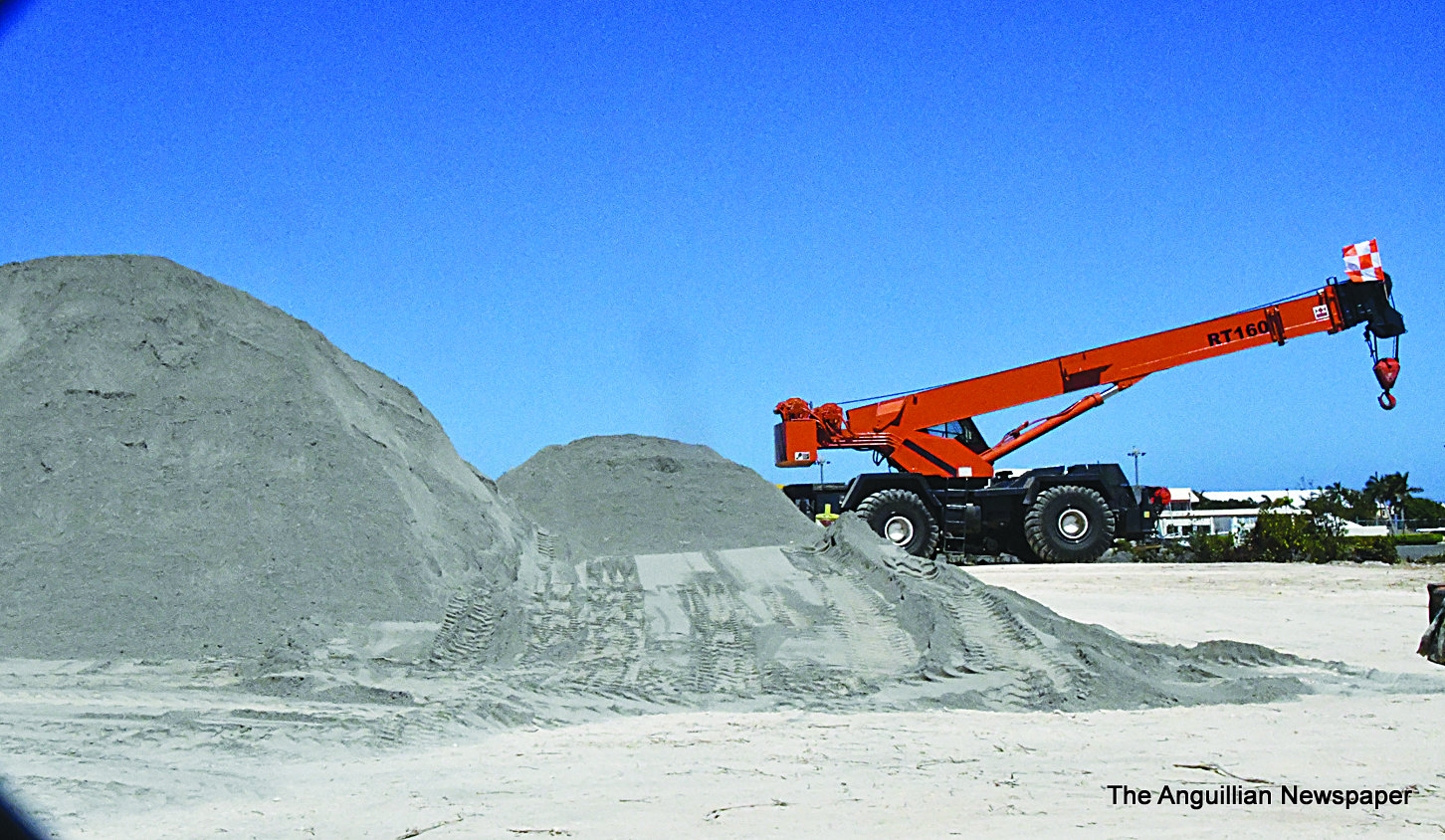When the Clayton J. Lloyd International Airport in Anguilla is resurfaced, the necessary bitumen will have been supplied by France and Germany; the rocks from Canada; and the bitumen plant from St. Maarten.
The bitumen plant arrived in Anguilla on Saturday, February 20, at Road Bay, and is now in place at the southern side of the airport. In that area also, as from Tuesday, February 23, as well as from throughout the week, is a quantity of the imported rocks or aggregate.
Minister of Infrastructure, Mr. Haydn Hughes, stated: “The resurfacing of the airport runway is going to commence very shortly. The work is going to be done mostly in the evenings so that there will be no issues relating to incoming and outgoing flights, impacting the operations of the airport.
“The technical people are already in Anguilla setting up the asphalt plant, and from March first the resurfacing of the airport is scheduled to commence. The resurfacing work takes into consideration the removal of some of the airstrip and then adding on twice as much of the strip.
“Windward Roads in St. Maarten will be doing the asphalting of the runway. The work is expected to cost some four million dollars, provided by the United Kingdom Government.
“We hope to increase the PCN so that we can accommodate larger and heavier aircraft. We don’t know what the PCN will be until we resurfaced the strip and then we can do the testing to know what the PCN is.”
PCN, stated above, is an International Civil Aviation Organisation standard, used in combination with the Aircraft Certification Number, to indicate the strength of an airport runway.










